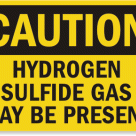Narrowing price differentials between inland crudes tied to West Texas Intermediate (WTI) and coastal crudes tied to Brent are resulting in a move away from rail shipments and back towards pipelines by producers in North Dakota. The switch away from rail is already having an impact on the lease rates for rail tank cars. Which could call into question the huge backlog of orders for new tank cars. Today we ponder the possibility of a bust in crude-by-rail shipments.
Daily Energy Blog
Two separate companies launched open seasons for complimentary pipelines last week (June 5, 2013) that would offer at least 420 Mb/d of capacity to ship heavy Canadian crude to the Gulf Coast by early 2016. Energy Transfer Partners proposes to reverse part of the Trunkline natural gas pipeline to ship crude. Enbridge propose to build a pipeline to link the Trunkline reversal directly to their Lakehead system. Today we explore the rationale behind these projects.
The production of natural gas liquids (NGLs) increased twice as quickly as expected just two years ago in 2011. Current production of 3.2 MMb/d (gas plants + refineries) was only supposed to be achieved in 2016 and now the forecast is for 4 MMb/d by then. The result has been more rapid implementation of infrastructure to handle NGLs and that supply has exceeded demand so that exports are required. Today we look at the impact of the rapid production ramp up.
Aside from dwindling oil production (that we discussed last week) the State of Alaska is also home to 35 Tcf of proven conventional natural gas reserves. These could be consumed domestically or exported as liquefied natural gas (LNG). Alaska is closer to Asian markets than the 20 LNG export projects currently sitting in the Department of Energy approval queue. But the massive infrastructure investment required to get Alaskan gas from north of the Arctic Circle to market requires complex alignment of competing producer, shipper and government interests. Today we review efforts by the 49th State to find markets for its natural gas.
Last week we started a blog series looking to answer the question - Are we likely to run into storage issues with NGLs while we are waiting for infrastructure and demand side projects such as export terminals and petrochemical facilities to be built out? Today we are going to take a deeper look at PADD 1 NGL market dynamics where gas plant production of NGLs is expected to grow from 63 Mb/d as reported by the EIA for February 2013, to over 585 Mb/d in 2018. We’ll assess growing supply and demand mismatches and how production will move between regions. Today we will lay the foundation for our PADD 1 NGLs storage picture.
By: Eric Penner
A lot of natural gas storage follows a time honored pattern – put gas in during the summer and take it out during the winter. But it is getting much more complicated than that. Developments in natural gas production – particularly in the Appalachian (Marcellus) region will be driving big changes through the gas storage business. Today we pick up on a blog series we started last month to examine the two fundamental value generating gas storage mechanisms, and how they match up with the physical characteristics of storage facilities.
This week BP announced plans to spend $1 Billion increasing production at the company’s Prudhoe Bay Alaska field. Years of declining Alaska North Slope (ANS) crude output have threatened state oil revenues and the safe operation of the Trans-Alaskan pipeline system (TAPS) that transports crude to the southern Port of Valdez. A new tax regime offers more upside potential to encourage producers like BP to invest. There is still a market for medium sour crudes like ANS on the US West Coast and in Asia. However Alaskan producers must overcome regulatory hurdles to compete successfully in these markets and competition for their drilling dollars from shale boom plays in the lower 48. Today we review the prospects for an ANS production renaissance.
The Energy East pipeline project proposes to convert part of the TransCanada Mainline natural gas system and add new pipeline in eastern Canada to connect oil receipts in Alberta with refineries in Ontario, Quebec and on the Atlantic seaboard. The proposal competes with existing plans by Enbridge to feed eastern Canadian refineries with light crude but does offer the prospect of supplying heavy crude for export from Canada’s East Coast. Today in Part 2 of a series on the project we review destination markets.
The Bentek Eagle Ford crude oil production outlook back in 2011 pointed to a four fold increase in production to 900 Mb/d over the five years to 2016. That number was actually achieved in under two years and today’s forecast calls for 1.5 MMb/d production by 2016. Those growth rates are remarkable enough but the super light nature of the crude being produced means much of it is better classified as condensate. The challenge for producers and refiners in Texas going forward is to find adequate markets for increasing volumes of condensate. Today we continue a series reflecting on the speed of change that shale production is dictating.
The TransCanada Energy East project proposes converting 1865 miles of the natural gas Mainline system and constructing 870 miles of new pipeline to deliver at least 500 Mb/d of crude oil to eastern Canada from Alberta. The pipeline conversion could solve two problems. It would bump up tariff revenues on the huge 7 Bcf/d Mainline that has been sucking air for years (it only moved 2.4 Bcf/d in 2012). And it would provide a route to Eastern markets for rising production volumes of landlocked Canadian crude. Today in the first of a two part series we examine prospects for this project.
By Al Troner, President Asia Pacific Energy Consulting (APEC)
Historically U.S. condensate production has been in the backwater of crude markets, dumped into local crude flows or more recently exported to Canada for use as heavy crude diluent. In stark contrast, the separation and processing of condensates in East of Suez markets is a major downstream activity, accounting for much of the Mideast Gulf’s naphtha exports and Asia’s feedstock supply. As U.S. condensate production increases, it is clear that new markets will be needed for the volumes – with suppliers eyeing those robust East of Suez destinations. Today we continue our blog series on international condensates examining splitter/processing capacity in the Middle East and Asia Pacific regions.
Data from Genscape showing rail terminal loading volumes in North Dakota and pipeline receipts into the Enbridge North Dakota pipeline suggest that shippers are switching barrels from rail back to pipeline this month (May 2013). The apparent switching follows a narrowing of crude price differentials between coastal destinations and the Midwest from $17/Bbl in April to less than $9/Bbl last week. Today we ask whether narrowing differentials are driving a reduction in crude by rail shipments.
We’ve been talking about growing natural gas liquid (NGL) production in recent weeks from the Williston Basin, the Eagle Ford, the Northeast and other geographies. We have also previously discussed the mismatch between NGL production growth and incremental domestic demand, but we have yet to answer the question: are we likely to run into storage issues with NGLs while we are waiting for infrastructure and demand side projects such as export terminals and petrochemical facilities to be built out? Today we start a series of blogs examining regional storage capacity and the mismatch between expected U.S. NGLs supply - an incremental 1.5 MMb/d between 2012 and 2018, and demand growth. In today’s blog, we set the stage for the series and take a broad look at NGL Storage.
Recently there has been a spate of pipeline tariff filings to the Federal Energy Regulatory Commission concerning crude oil quality specifications for Bakken crude in North Dakota. While the immediate disagreement between pipeline company Enbridge and shipper Plains Marketing appears to have been resolved, it has highlighted an issue which has not received much attention until now. Today we detail the concerns.
Crude-by-rail has had a huge impact on the market for tank cars. Currently there are 53,000 tank cars on back order and more orders are coming in. That’s up from a backlog of 48,000 just a couple of months ago. The tank car manufactures are enjoying every bit of it but for the first time since the ethanol boom, they can’t keep up. In the old days it took 9 months to deliver a new car. Now, there is such a backlog that manufacturers can’t deliver a new car for 24 - 30 months. Today we will review the rapidly evolving tank car situation based on a recent presentation made by Travis Brock from Strobel Starostka, a construction and rail services firm deeply involved in in the crude-by-rail markets.







